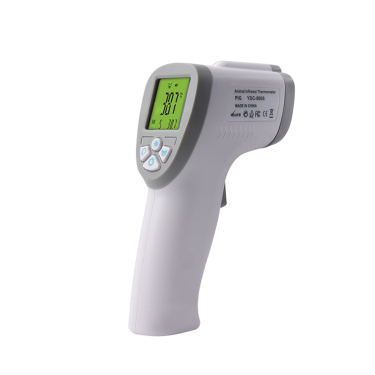
# Dog Thermometer: Essential Tool for Monitoring Your Pet’s Health
## Why Every Pet Owner Needs a Dog Thermometer
As a responsible pet owner, monitoring your dog’s health should be a top priority. One of the most fundamental tools in your pet care arsenal should be a reliable dog thermometer. Unlike human thermometers, these specialized devices are designed specifically for canine use, providing accurate readings that can help you detect potential health issues early.
A dog’s normal body temperature ranges between 101°F and 102.5°F (38.3°C to 39.2°C), which is slightly higher than humans. When their temperature rises above 103°F (39.4°C) or falls below 99°F (37.2°C), it could indicate serious health problems that require immediate veterinary attention.
## Types of Dog Thermometers Available
### 1. Rectal Thermometers
The most accurate method for measuring a dog’s temperature is through rectal thermometers. These digital devices provide quick readings and are considered the gold standard in veterinary medicine. Modern versions often feature flexible tips for comfort and beep when the reading is complete.
### 2. Ear Thermometers
For less invasive temperature checks, ear thermometers designed for dogs can be a good alternative. These measure the infrared heat waves emitted from the ear canal. While convenient, they may be slightly less accurate than rectal thermometers, especially if not positioned correctly.
### 3. Non-contact Infrared Thermometers
These allow you to take temperature readings without physical contact by measuring thermal radiation. While extremely convenient, they tend to be the least accurate option and are better suited for quick screenings rather than definitive measurements.
## How to Properly Use a Dog Thermometer
Using a dog thermometer correctly is crucial for obtaining accurate readings. For rectal thermometers:
- Lubricate the tip with petroleum jelly or water-based lubricant
- Gently lift your dog’s tail and insert the thermometer about 1 inch into the rectum
- Hold it steady until it beeps (usually 10-60 seconds)
- Clean the thermometer thoroughly after each use
For ear thermometers, gently insert the probe into the ear canal following the manufacturer’s instructions. Always reward your dog with treats and praise to create positive associations with temperature checks.
## When to Check Your Dog’s Temperature
Regular temperature checks aren’t necessary for healthy dogs, but you should monitor your pet’s temperature when you notice:
- Lethargy or unusual behavior
- Loss of appetite
- Vomiting or diarrhea
- Shivering or panting excessively
- Before and after vaccinations
- During recovery from illness or surgery
## Choosing the Right Dog Thermometer
When selecting a dog thermometer, consider:
Accuracy: Look for veterinary-grade devices with proven accuracy.
Speed: Faster readings make the process easier for both you and your pet.
Durability: Choose models that can withstand occasional drops or rough handling.
Ease of Cleaning: Waterproof designs are preferable for hygiene.
Keyword: dog thermometer
Display: Large, backlit screens help with reading measurements in low light.
## Maintaining Your Dog’s Thermometer
Proper maintenance ensures your thermometer remains accurate and hygienic:
- Clean before and after each use with alcohol wipes or mild soap
- Store in a protective case to prevent damage
- Replace batteries regularly
- Check accuracy periodically by comparing with a known accurate thermometer
## Understanding